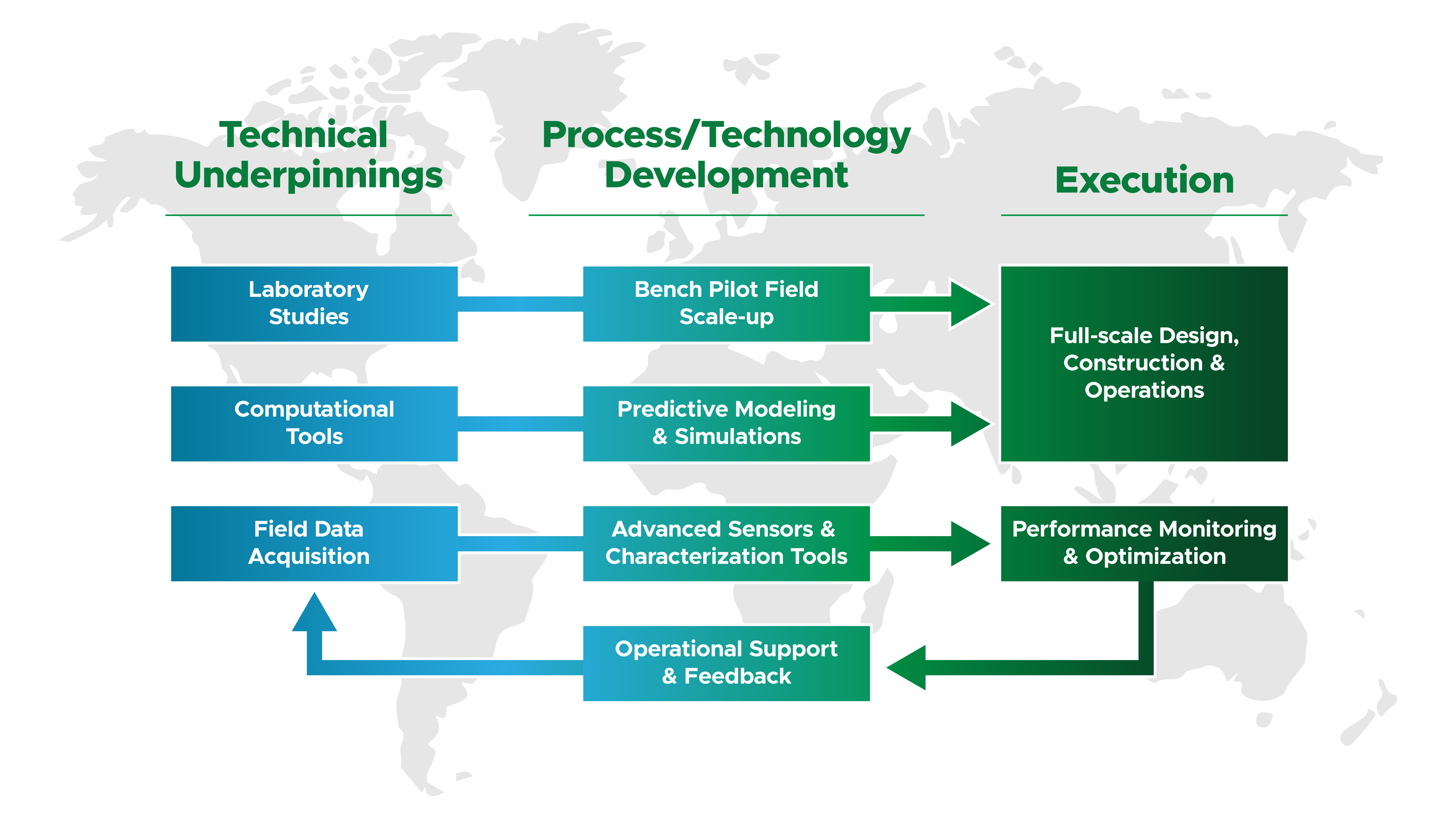About RemPlex: History
Overview
Pacific Northwest National Laboratory’s (PNNL’s) Center for the Remediation of Complex Sites (RemPlex) was formed in 2019 to provide a global forum committed to fostering technical leadership, collaborative research, and professional development and facilitate cost-effective remediation of complex sites through application of proven and innovative solutions. RemPlex supports an interdisciplinary approach to identifying solutions for complex contaminated sites through all phases of development and remediation, from complex site characterization and conceptual site model development through adaptive site management and long-term stewardship.
Our vision is to (1) promote technical stewardship and advances in research and development needed to translate science and engineering innovation into practical, adaptive solutions; (2) serve as a technical focal point to the environmental remediation community to provide centralized knowledge; and (3) serve as an independent resource to support regulatory decision-making at complex sites around the world.
Core Values
Stewardship: Steward world-class capabilities that support the remediation, restoration, and protection of valuable natural resources, water resources, and ecosystems.
Innovation: Foster an environment of continuous scientific and engineering advancement that cultivates collaborative, novel ideas that are transformed into practical remedial approaches and solutions.
Impact: Create an international community of progressive leaders who transcend organizational boundaries to inspire creative solutions to the most difficult challenges facing complex sites worldwide.
Professional Development: Provide forums for knowledge transfer and networking to support current and next generation remediation specialists.
PNNL’s Role and Technical Expertise
PNNL is home to a tremendous amount of technical expertise developed over nearly 60 years of research and development addressing site remediation challenges facing the Department of Energy (DOE) and other problem-holders. RemPlex promotes a highly collaborative, interdisciplinary, and multi-institutional forum, where PNNL’s past and present experiences are leveraged to advance efficient solutions and form partnerships to be used at other complex contaminated sites to help restore valuable natural resources and protect regional, national, and global water resources and aquatic ecosystems.

Stay Connected
Subscribe to our newsletter by completing a short RemPlex news form.